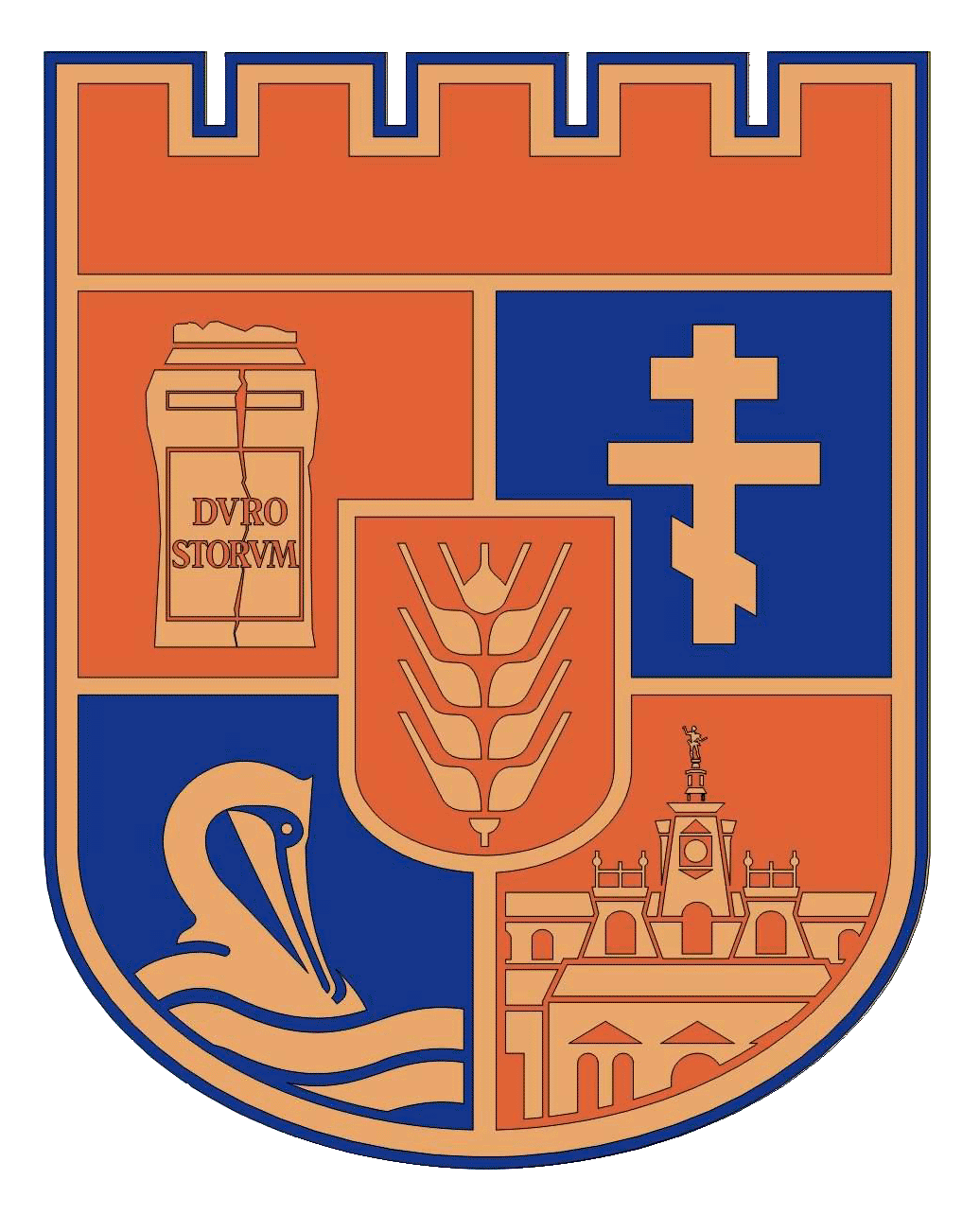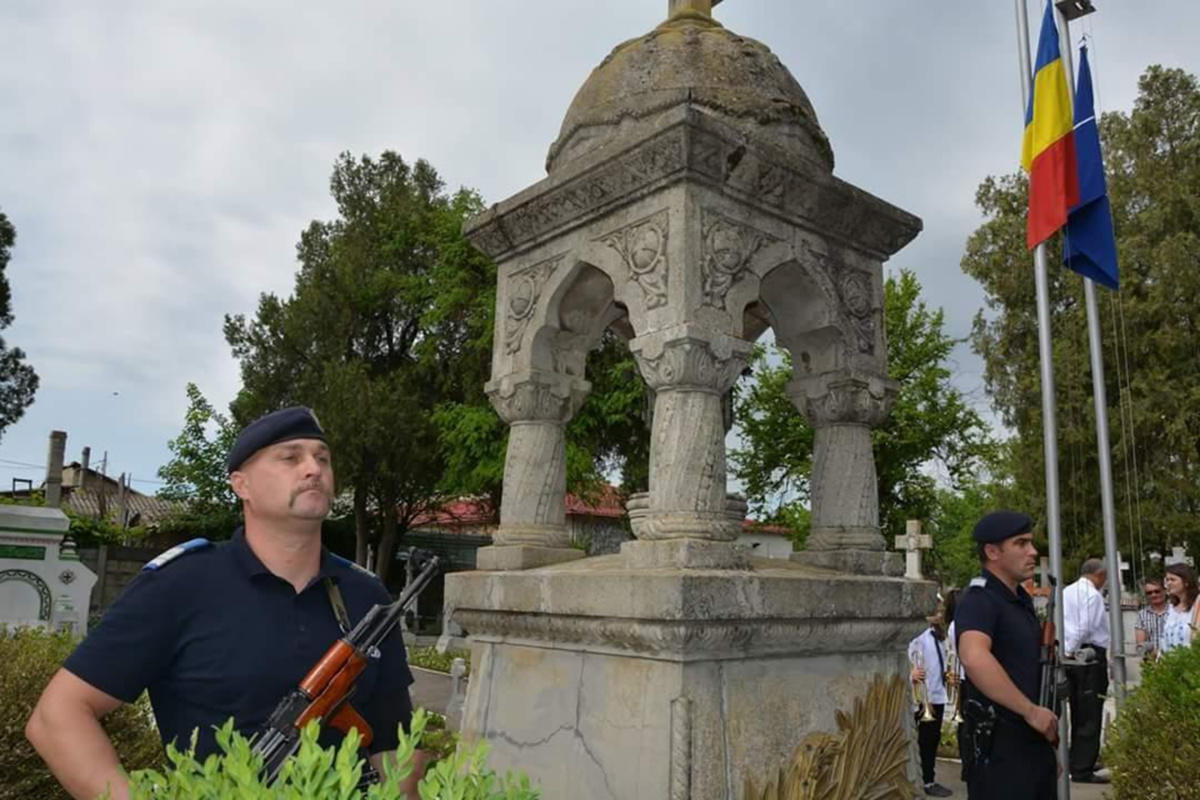The Heroes monument
Category MonumentLOCATION
Calarasi Central Cemetery, Romania
DESCRIPTION
This work was raised by the perseverance of a committee having as president Gh. Cristodorescu and conceived and executed by the sculptor Th. Burca.
The statue, the reliefs, the decorative elements, including the helmet and the laurel branch, were cast in bronze at FABRICA V.V.R.ŞCANU in Bucharest, and the stonework of the shock was entrusted to the stonecutter Dumitrescu.
Romania's participation in World War I includes all the political, diplomatic and military measures and actions carried out by the Romanian State alone or with the allies between July 28, 1914 and November 11, 1918, in order to achieve the main political goal of participation in the war - the Romanian unitary national state.
HISTORY
The international system was marked at the end of the nineteenth and early twentieth centuries by the rivalry of the great powers to control the extra-European world. In Europe, Germany had become the main power and its behavior on the continent led to an extraordinary breakdown and recomposition of alliances over the previous decades.
From a military point of view, Romania came after a glorious victory in the Second Balkan War, the euphoria of victory making it easy to overcome the shortcomings in the field of military leadership, the organization and training of troops and, in particular, the endowment with weapons and fighting techniques modern.
Although linked to the Austro-Hungarian Empire by a secret alliance treaty in 1883, Romania chose to declare itself neutral at the outbreak of hostilities in July 1914, relying on the interpretation of clauses relating to casus foederis.
Romania's participation in the First World War (1914-1918) includes all the political, diplomatic and military measures and actions carried out by the Romanian State alone or with the allies between July 28, 1914 and November 11, 1918, in order to achieve the main political goal of participation in the war - the Romanian unitary national state.
In August 1916, Romania receives an ultimatum to decide whether it wants to join the Entente "now or never". Under the pressure of the ultimate demand, the Romanian government agrees to enter the war on the Entente side, although the situation on the battlefields was not favorable.
After a series of rapid tactical victories in Transylvania over some numerically overwhelmed Austro-Hungarian forces, the Romanian army suffered in the fall of 1916 a series of crushing defeats, which would force the state authorities to flee to Moldova, allowing the enemy to occupy two thirds of the national territory, including Bucharest.
In the winter of 1916 and the spring of 1917 under the leadership of a new military leadership (Presan, Christescu, Grigorescu, Averescu, Văitoianu, etc.) and with the substantial support of the French Military Mission led by General Henri Berthelot, the Romanian Army was reorganized and trained on modern basis adapted to the requirements of the war.
The campaign in the summer of 1917 was a successful one, succeeding, in the initial phase, the defeat of the Central Powers troops in the battles of Marasti, Oituz and Marasesti. The Romanian military planners intended to continue to develop this offensive to begin the liberation of the occupied territory, but the outbreak of the revolution in the Russian Empire led to the abandonment of these plans and the return to the strategic defensive.
The situation on the eastern front evolved in a negative way, so that after Russia ended the Brest-Litovsk peace with the Central Powers (Romania had been allied with the Central Powers since 1882), Romania had to demand the armistice and then have to go out of the war and sign a in the spring of 1918. Fortunately, the refusal of King Ferdinand, who has long delayed the formal gesture to sign this treaty, made it possible to resume the hostilities in the last two days of the war, preserving in this way Romania's status of a belligerent state at the Paris Peace Conference.
SITE SIGNIFICANCE
Memorial complex
VISITOR INFORMATION
Situl este liber pentru vizitare.
OTHER INFORMATION
Călăraşi is the administrative centre of the county with the same name. Calarasi is known for its food industry, the melamine chip industry, the steel industry, the paper industry and the prefabricated industry.
https://audiotravelguide.ro/monumentul-eroilor-calarasi/
SITE CLASSIFICATION
Memorial complex




